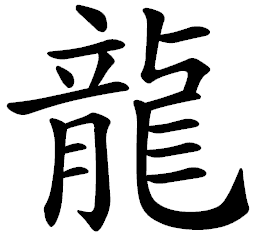Here are the styles you will have access to:
The following tags are just to help people who are searching for Asian tattoo info to find this page.
Bushido - Way of the Warrior
Dragon
Love
Peace / Harmony
Aikido Tattoo
Faith
These free samples will show you how the tattoo templates work. Your custom page will be in the same format but with your special word or phrase.

Don't end up with meaningless or fake Chinese characters on your body!
Many people end up with incorrect or meaningless characters. To make matters worse, virtually all flashers in tattoo parlors contain some errors or misrepresentations.
Don't end up with "Big Dumb Pink Dragon" on your arm (unless that's what you want). Plenty of people have sent me pictures of their Asian character tattoos, and many times, I've had to tell them some really bad news about the meaning of their tattoos. There was actually a guy that had a "powerful dragon female" on his neck. Many others thought they were getting "courage" but instead got something that meant "terrible mistake" instead.
To help you avoid tragedy, I've created this Japanese Kanji and Chinese character tattoo service.
Whether you need just one simple character or you want a whole phrase translated, I'll do it for you and output it as large image files in a variety of character styles.
I've been studying Japanese and Chinese for over 19 years, but that's not enough. All tattoo projects are translated and checked by my staff of professional native Japanese or Chinese translators.
Much of the time, single words are written the same in Japanese and Chinese (in fact, they are often the same in old Korean Hanja too). Therefore your tattoo will often be universal in the CJK (Chinese Japanese Korean) world.
However, if this is not the case, I suggest going with the Chinese version since a third of the world's population will be able to natively read your tattoo, while about 1% of the world population is Japanese.
Just enter the word, character, or phrase that you are looking for, the number of English words, and the target language. Click on the "Add to Cart" button and checkout.
After that, I may email back and forth with you a little if your phrase is complex. I really want to make sure the result is accurate. Then, after a day or two, I'll send you a link to a custom web page just for you. From there, you can download and print digital templates of your characters.
To make it simple, this service is priced based on the number of English words that you want to be translated.
It's $20 for the first word, and $5 for each additional word.
Note: You can count compound words like "will-power" or "non-violence" as one. Also, no need to count little articles like "and," "is," "of," "the," etc.
This item was listed or modified
Feb 26th, 2023
Here are the styles you will have access to:
The following tags are just to help people who are searching for Asian tattoo info to find this page.